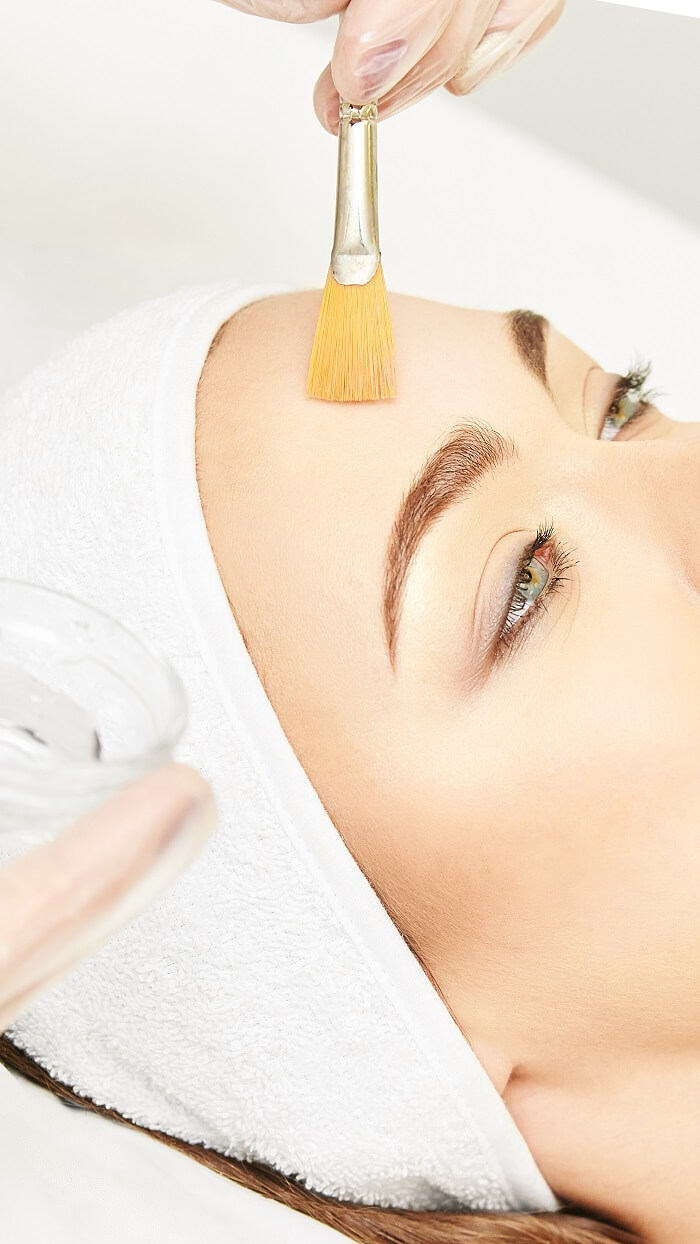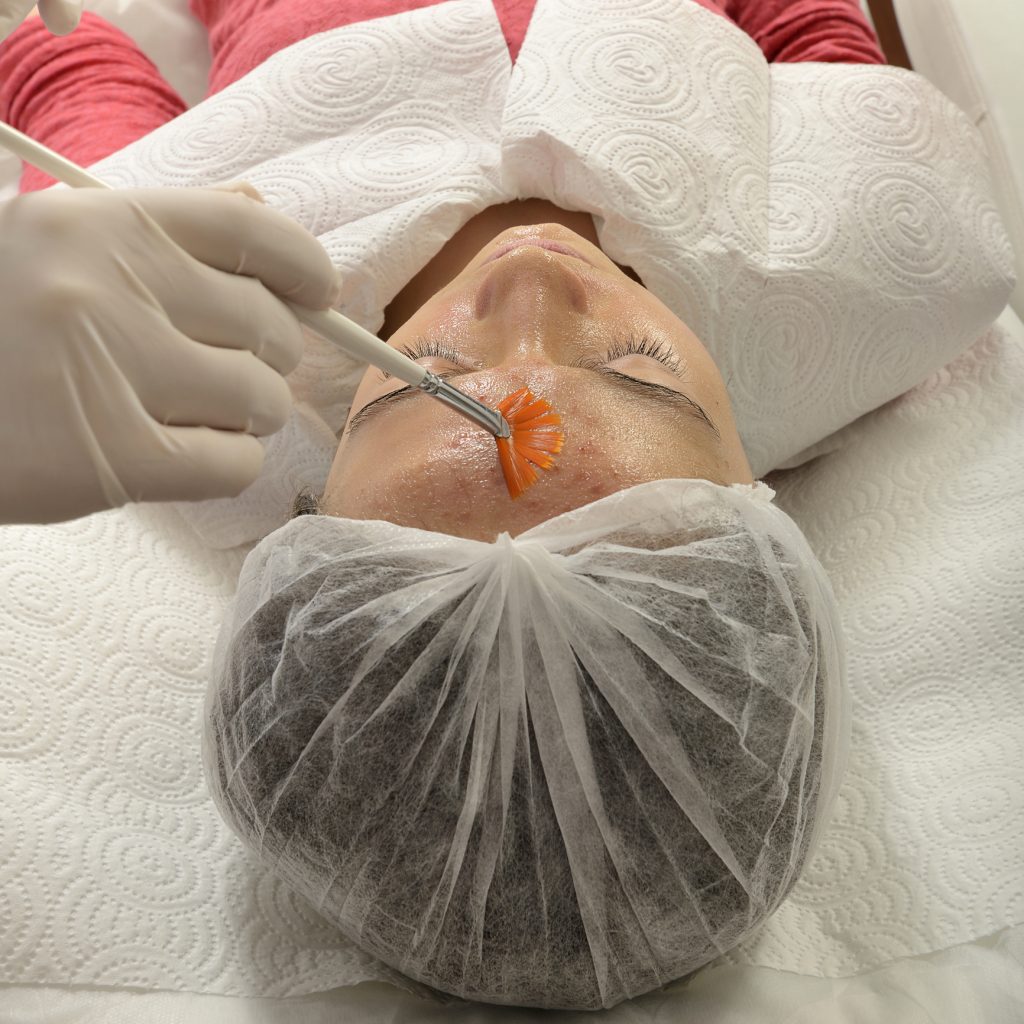Chemical Peels from U.S. Dermatology Partners
Types of Chemical Peels Explained
When it comes to dermatological treatments that will help people reclaim a youthful glow, create an even skin tone, and minimize the appearance of scars, chemical peels offer a conservative solution that addresses all of these concerns. Chemical peels are versatile treatments that help to improve the health and appearance of the skin, and just about every patient could benefit from the procedure. If you’re interested in learning more, continue reading below or get in touch with a U.S. Dermatology Partners location near you to schedule your visit.
Find This Service Near You
What Are Chemical Peels?
Chemical Peels are treatments that can improve the skin’s appearance by peeling off an old layer of skin to reveal the healthy new skin below. The ingredient used in the chemical peel solution makes the skin redden, and when the skin peels off, the skin below it is smoother, healthier, and less wrinkled.
Chemical peels are used to treat a number of different concerns including:
Chemical Peels for Wrinkles & Fine Lines
By removing the outer layers of skin, chemical peels reveal the skin below that is smoother and healthier, diminishing the appearance of fine lines and wrinkles. In addition to this immediate reduction in the appearance of fine lines and wrinkles, chemical peels also stimulate the production of collagen and elastin. These are the components that give our skin youthful fullness, smoothness, and elasticity. Increased production of collagen and elastin means you’ll continue to see a reduction in the appearance of fine lines and wrinkles for several weeks or even months after your chemical peel.
Chemical Peels for Certain Types of Acne
Dead skin cells that aren’t removed frequently are a contributing factor to acne as they can clog pores, leading to breakouts. Periodic chemical peels can help prevent the buildup of dead skin cells and reduce your risk for pimples and breakouts.
Chemical Peels for Age Spots, Freckles & Dark Patches
In addition to minimizing the risk for clogged pores, removing excess skin cells through a chemical peel also helps to create a more even skin tone. For this reason, it’s often used to address the appearance of age spots, freckles, and other dark patches on the skin. Skin discoloration appears over time due to sun exposure and other external factors that impact the outer layers of skin first. When these outer layers of skin are removed, the healthy, new skin below has a more consistent skin tone.
Chemical Peels for Scars & Skin Texture Irregularities
Healthy new skin revealed by a chemical peel has an even skin tone, but it also has an improved texture. Whether your skin is scarred, bumpy, or otherwise texturally different, removing the outer layers of skin will start to diminish the texture irregularities, revealing smoother and healthier skin below.
Chemical Peels for Acne Scars
Acne scars are left behind as a result of acne that has damaged the layers of the skin. These scars, which appear as raised or pitted depressions in the skin, are left after the acne has cleared. Chemical peels can help to diminish the appearance of both raised or pitted acne scars by revealing layers of healthy, new skin more quickly and stimulating the body’s healing processes.
Who Is a Good Candidate for a Chemical Peel?

Other individuals who may not be good candidates for chemical peels include those who:
- Have used Accutane (isotretinoin) in the last six months
- Have a family history of abnormal scarring (keloid scarring, hyperpigmentation, hypopigmentation, etc.)
- Women who are pregnant, nursing, or actively trying to become pregnant
- Have frequent cold sores
- Have an active infection or sore
- Have poorly managed chronic skin conditions like psoriasis or eczema
- Spend a lot of time outdoors
How Do Chemical Peels Work?

Chemical Peels are a relatively quick procedure.
Not all chemical peels are the same. In fact, they fall within a range from very superficial to deep peels. More superficial chemical peels penetrate the skin’s pores, enabling them to release the dead skin and boost collagen and elastin production, improving the skin’s overall appearance. Deep chemical peels penetrate into the skin, removing scarred skin cells and other skin irregularities below the surface of the skin, allowing healthy cells to replace them.
Chemical peels can be completed in less than an hour in your dermatologist’s office. The process is relatively straightforward. We’ll begin by cleaning the skin and protecting any areas that are not being treated. After cleaning your skin, your practitioner will apply a chemical solution to the designated areas. This may create a slight burning feeling. The burning sensation can last for up to 10 minutes, and there may be a stinging feeling afterward that can be treated with a cool compress.
In most cases, your face will feel slightly sunburned for a few days, and you’ll want to avoid exposure to the sun. If you had a deeper peel, you may need pain medication, or if there is swelling or blistering, you may need bandages. After a few days, your outer layer of skin will begin to peel away. This is similar to what happens after a bad sunburn. Once this process is completed, you’ll see a healthy, beautiful new layer of skin revealed.
Are There Side Effects to a Chemical Peel?

How Long Will a Chemical Peel Last?
While one chemical peel will deliver some improvement, dermatologists will usually recommend a series of two to four peels to achieve the ideal results. In order to maintain the results, we may recommend periodic retreatments. For people who are treating a specific condition, a medium-depth peel could be repeated every six to 12 months as needed. Others may find they can go longer between treatments. Talk to your doctor at U.S. Dermatology Partners to discuss what is the best treatment schedule for you.
*Results may vary by individual





